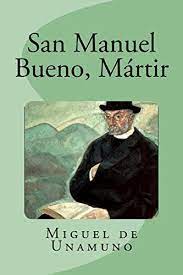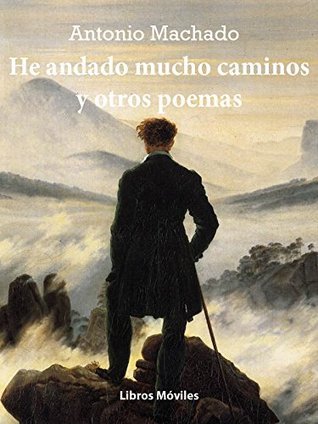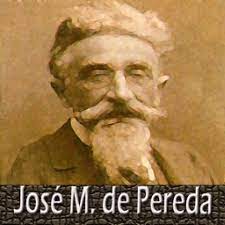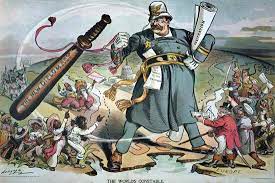Unit 5 Overview: La Generación del 98 y el Modernismo
5 min read•june 18, 2024
Sylvia Rodriguez
A
Alejandra Ramos
AP Spanish Literature 💃🏽
24 resourcesSee Units
It is important to understand the historical and cultural context in which the authors of the Generation of '98 and the Modernismo movement wrote. This unit covers authors from both Spain and Latin America, and their work reflects the social, political, and cultural changes of the late 19th and early 20th centuries.
Unit 5 is one of the "awkward" units, where it is really a bridge between two different types of literature pieces with their own unique messages. There’s religion, mystery, self-reflection, and so much more in this unit. As you interpret the pieces, be cautious to not focus too much on the details but rather, focus on what role each piece plays in the grand scheme of things.
Historical Context of Unit 5
Two literary movements that appeared in Spain towards the close of the 19th and the start of the 20th centuries were the Generation of '98 and Modernism.
The Generation of '98 was distinguished by its concern for Spain's social and political issues as well as its identity crisis, whereas Modernism stood out for its avant-garde aesthetics and pursuit of beauty and exoticism. Both literary movements left a significant literary legacy in Spanish literature, including works by well-known authors like Rubén Daro and Juan Ramón Jiménez in modernism and Miguel de Unamuno and Antonio Machado in the Generation of '98.
The Generation of '98 and the Modernismo movement are significant literary movements that marked a shift in Spanish and Latin American literature. The writers of the Generation of '98 were deeply affected by the political and social upheavals of the time, including Spain's loss of its colonies and the decline of the country's empire. These writers sought to redefine Spanish identity by exploring the country's cultural heritage and traditions, and they emphasized the importance of individualism and freedom of expression.
In contrast, the Modernismo movement, which emerged in the late 19th century, was characterized by a focus on language, form, and aesthetics. Writers such as Darío and Martí sought to break away from traditional literary styles and create a new form of literary expression. Modernismo was characterized by its use of vivid imagery, musical language, and experimentation with form and structure.
Required Literature Pieces in Unit 5
Below are summaries of all required texts for this unit in AP Spanish Literature! Be sure to click each heading to be sent to that respective guide and learn more about these pieces of literature.
5.1 San Manuel Bueno, mártir – Miguel de Unamuno

Image Courtesy of AbeBooks
Summary
The novella "San Manuel Bueno, mártir" is a story written by Miguel de Unamuno. San Manuel Bueno, the priest at the center of the narrative, is revered and adored by the locals for his selfless deeds of generosity and spirituality. However, the viewpoint of a young guy who grows close to him sheds light on the truth of his internal conflict and loss of faith. In this stimulating literary work, Unamuno examines the concepts of faith, doubt, and the complexity of human existence.
Temas to Lookout For
- La dualidad del ser
- La espiritualidad y la religión
- La imagen pública y la imagen privada
- La introspección
- El tiempo lineal y el tiempo circular
- La naturaleza y el ambiente
- La asimilación y la marginación
5.2 "He andado muchos caminos" – Antonio Machado

Image Courtesy of Goodreads
Summary
The poem "He andado muchos caminos" was written by Antonio Machado. Machado expresses a sense of tiredness and reflection as he thinks about his life path. He thinks about the pathways he has taken, the people he has encountered, and the lessons he has learned along the way through vivid imagery and thoughtful lines. He ultimately presents an emotional reflection on the limited existence one has.
Temas to Lookout For
- Las relaciones interpersonales
- El individuo y la comunidad
- La amistad y la hostilidad
5.3 “Nuestra America” – José Martí

Image Courtesy of AppAdvice
Summary
The essay "Nuestra América" was written by José Marti, a Cuban writer and independence activist. Marti fiercely defends the unity and independence of the countries in Latin America in this popular essay. He urges a common identity and an alliance in the fight against the dominance of foreign powers. Marti stresses the necessity of intellectual and cultural growth, advising his fellow Latin Americans to embrace their own culture, traditions, and history.
Temas to Lookout For
- Las sociedades en contacto
- El imperialismo
- El nacionalismo y el regionalismo
5.4 “A Roosevelt” – Rubén Darío

Image Courtesy of ThinkLink
Summary
The poem "A Roosevelt" was written by Nicaraguan author Rubén Daro. The poem is a critique of Theodore Roosevelt's interventionist and imperialist actions in Latin America. Daro approaches Roosevelt personally, expressing his disgust with the American government's damaging actions in the area. The poem serves as a stinging critique of American imperialism and a plea for Latin American solidarity in the face of foreign intervention through vivid imagery and strong rhetoric.
Temas to Lookout For
- Las sociedades en contacto
- El imperialismo
- El nacionalismo y el regionalismo
5.5 “El hijo” – Horacio Quiroga

Image Courtesy of WordPress
Summary
Horacio Quiroga, a novelist from Uruguay, wrote the short story "El hijo" (The Son). The father and son at the center of the story are inhabitants of Argentina's Misiones jungle, a harsh environment. With themes of loneliness, psychosis, and the innate savagery of nature, the novel dives into the tense interaction between the two characters. The eerie atmosphere created by Quiroga's detailed imagery and psychological understanding reflects the grim and fatalistic mood that infuses much of his writing.
Temas to Lookout For
- Las relaciones interpersonales
- Las relaciones familiares
- La construcción de la realidad
How to Navigate This Unit
Enjoy it! This unit really has a little bit of everything which is why at times it will seem overwhelming. This is probably one of the heaviest units not just because of the content but because you are also at the halfway mark. Although there will be some hiccups, this unit really does have something for everyone (:
The works covered in this unit are significant for their exploration of identity, culture, and social change. They are also important for their contributions to the development of modern Spanish and Latin American literature.
Browse Study Guides By Unit
🏇Unit 1 – La época medieval
🛳Unit 2 – El siglo XVI
🖌Unit 3 – El siglo XVII
🎨Unit 4 – La literatura romántica, realista y naturalista
🤺Unit 5 – La Generación del 98 y el Modernismo
🎭Unit 6 – Teatro y poesía del siglo XX
🌎Unit 7 – El Boom latinoamericano
🗣Unit 8 – Escritores contemporáneos de Estados Unidos, y España

Fiveable
Resources
© 2025 Fiveable Inc. All rights reserved.